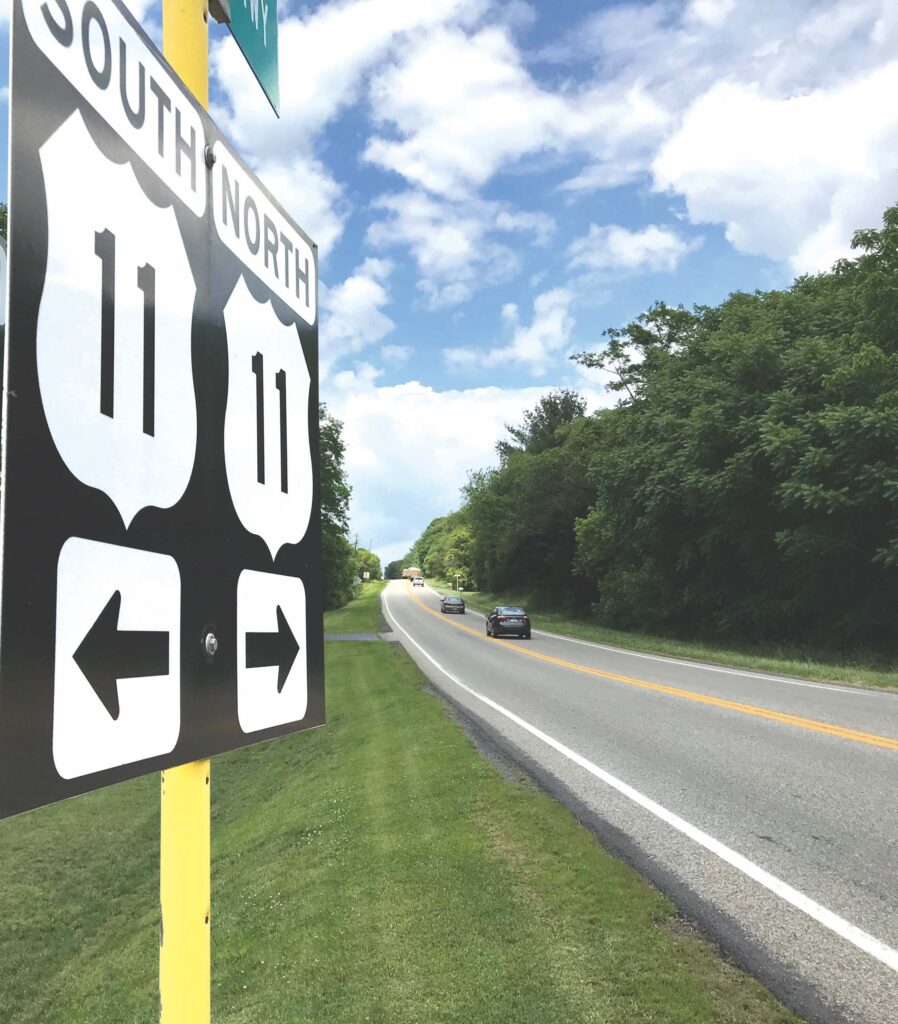This Saturday is the great Route 11 Yard Crawl! It will span the length of Shenandoah County and extend into neighboring counties as well. Depending on your zeal for used treasures and your toleration for traffic you either love it or hate this annual event. Thankfully, it does bring commerce to the valley and motivates the cleaning of many closets and garages.
I was fortunate to grow up beside the Valley Pike. Before it was known as that, however, it was called the great Indian Warpath according to Norman Scott in Shenandoah Iron. I had heard stories about how this thoroughfare developed from a well-used Native American trail that extended from Pennsylvania to Cumberland Gap and beyond.
After early settlers began using this pathway, they called it the Great Wagon Road, then the Old Stage Road, and later the Valley Turnpike. Throughout most of its early history, it remained an unimproved dirt road in worse shape than many current backroads. A good downpour rendered it largely impassable until drier conditions returned.
According to Scott, in 1838, West Point graduate James Anderson was hired to improve this “highway.” He began by grading the surface so water drained off and built walls where fill was needed. Another major improvement was his installation of wooden bridges across bisecting streams.
Over time, the Valley Pike was macadamized as small stones were added and compacted. Workers used sledges and picks to break the valley’s abundant limestone into smaller pieces for this purpose. This was before mechanization provided industrial processes that required less sweat. I can only imagine smashing rocks beneath the August sun twelve hours a day.
The 1860s saw the Valley Pike become a major corridor for both Union and Confederate armies as they moved north and south during the Civil War. If only this road could talk, the stories it would tell.
For the next hundred years, Route 11 saw increased use as the valley remained an agricultural and industrial powerhouse. At various times, it was the landowners’ responsibility to maintain the roadway in front of their properties while tollgates were installed later to fund maintenance and improvements.
As automobiles became more affordable, many tourists visited the scenic Shenandoah Valley and many motels and attractions sprouted up along it to serve them. The valley road changed considerably, however, when Interstate 81 opened in the 1960s diverting most non-local traffic. While lightening the load on the old warpath, it also led to the demise of many businesses.
As we travel Route 11 today, we rarely think about the hard work of those who have gone before us. The thousands of laborers who gradually improved this road are largely forgotten by the many locals who travel it daily to work, school, and play.
This phenomenon is true in many areas of life. Our ancestors labored long and hard to hand us the economic, military, political, and social fabric of our country. With virtually nothing but hand tools, horses, and prayer they laid the roadbed for this nation that we all benefit from today. We rob them when we enjoy the fruits of their labors without acknowledging their hard work.
This reminds me of Jesus’ words in John 4:38, “Others have done the hard work, and you have reaped the benefits of their labor.” He was specifically speaking of harvesting souls into whom others had sown evangelistic seeds.
That is still true today in the church and in society. We should be grateful for the giants of the faith who have gone before to present to us the church we now have. We sin against God and them when we flippantly discard their influence and prayerful examples to follow the whims of current thought.
May we acknowledge the efforts of earlier saints to build a straight faithful road for us and may we improve it for those who follow on life’s highway.
Avoiding the Crawl, George
